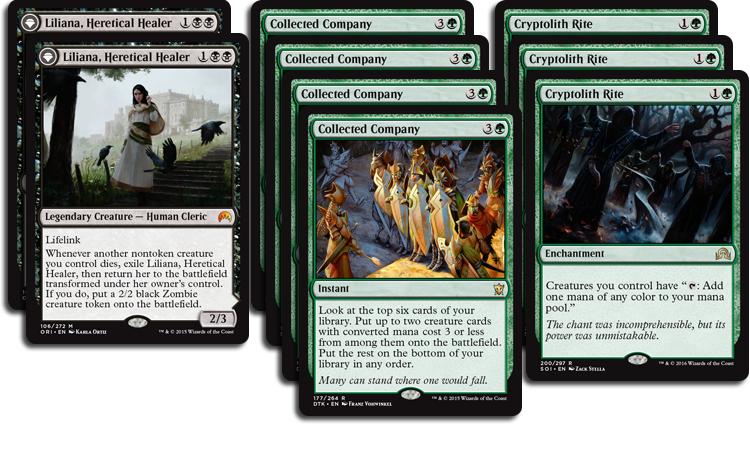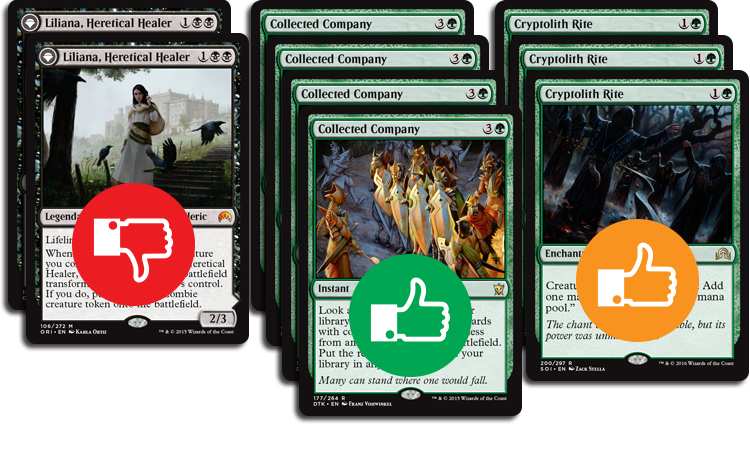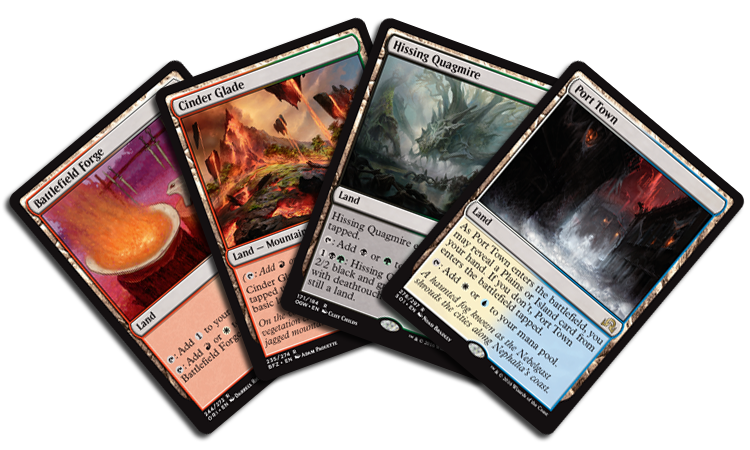Five Steps to Winning on a Budget
All right. So you're feeling ready to play competitively. You've spotted a deck you like. There's just one issue: you don't quite have all of the cards you need yet.
What do you do? What are your options?

In my ten-plus years of writing about Magic, one of the most popular questions I'm asked is this: "How can I win on a budget?"
First let's define what we mean by "budget." For this article, what we're talking about when we discuss budget is card availability. Rares are more difficult to acquire than uncommons, and mythic rares are more difficult to acquire than rares.
The good news is that it is definitely doable in today's world. You just have to be methodical and figure out what you want to build.
So, how can you win on a budget? Today, let's answer that question!
1. Decide Which Deck You Want to Build
This may sound simple, but it really is a very important step! The very first thing you should do is identify which deck you'd like to play. I've seen too many people just flail their arms about like some kind of wacky inflatable-arm tube-man, trading for a scattershot of Standard cards, hoping that somehow suddenly all of Standard will become available to them.
Building on a budget is, just like Magic, a game of resources. When trading cards, for example, you only have so many cards you can trade away—so you should have a target in mind for what you want to build.
And with that target comes realistic expectations for what you can build using your card pool. For example, if you're looking over the Top 8 decklists from the most recent Pro Tour and there are three decks you are interested in playing, and you have half the cards for one of them but almost none for the other two, then it's going to be much easier to start going in the direction of the deck you have more of.
Just for an example to continue with for the rest of this article, let's say we settle on Luis Scott-Vargas's Black-Green Aristocrats deck.
Okay. So you've chosen your deck. Perhaps you've read a little bit on how it works, so you can begin to understand what it does and make sure it's the deck for you.
What's next?
2. Identify What's Irreplaceable
Building on a budget is one thing. Building a winning deck on a budget is another.
Our goal should still be to build as competitive a deck as possible despite our budget constraints. And while this may involve a couple of very slight downgrades or moving sideways on a few cards, there's one thing that is very important: acquiring the irreplaceable cards.
Some decks have integral pieces that there aren't good substitutes for, and, in this budget deck-building game of resources, those are the pieces you should be spending your time and energy trying to acquire.
As an example, let's look at the three nonland main-deck rares and mythic rares in the aforementioned Black-Green Aristocrats deck from earlier. (I'll talk about lands and sideboards in a little bit.)

Okay, let's go through each. For each, you should be asking yourself two questions: Is this crucial to the deck, and is there a possible replacement?
Collected Company is a Standard staple, and a very powerful card. There's nothing else that even comes close to its power in putting a bunch of creatures on the battlefield. It's also very important for the deck's game plan, since it provides you a bunch of creatures at instant speed. This is one you should really try and acquire.
Cryptolith Rite there definitely isn't a replacement for. There's no other card in Standard that does something like what it does. Is it crucial? Well, it's pretty important—though the deck certainly functions fine without it. I would play them if I had them, and I would try and get them, but they are a much lower priority than the Collected Companys. If you don't have them yet, you can still be okay.
Liliana, Heretical Healer is not crucial to the deck, and you could play a different three-drop in its place. While you should certainly use them if you have them, if you substitute a different three-drop card like Fleshbag Marauder or Tireless Tracker, you'd still be in fine shape. It's maybe not 100% optimal, but it's more of a sideways move than a downgrade.

The best way to identify how important a card might be is definitely to think about how the deck plays and watch it be played. However, if you're looking for a quick way to identify a card's importance, a good rule of thumb is to check how many copies are in the deck. That's a good indicator of how important the deck's designer thought it was to draw.
Now, this is far from a perfect metric. Plenty of powerful, necessary cards get played with fewer than four copies, such as legendary creatures, individual tutor targets (just try playing the Seasons Past deck without the two copies of its namesake card!), and so on. But it's a great indicator to factor into your analysis.
3. Delve into the Mana Base
While the flashy spells tend to get all of the credit while you're playing, perhaps the most crucial part of a deck is actually its mana base.
Your lands help make sure that all of your spells do their thing effectively and on time. Your entire deck can crumble without the right lands.
It's for this reason that I always recommend trying to pick up the dual lands for each set as they come out over most everything else, because you're going to get more use out of them than practically anything else. If you're building a blue-white deck, and it's anytime during the eighteen-month period that Shadows over Innistrad is legal, you're almost certainly going to be putting Port Town in your deck.

With that said, sometimes you just don't have what you fully need to make your deck work. Maybe, for example, you have some of the dual lands you need but not all of them.
In these cases, I would look at what substitutes are available in the format. For example, great ones are the uncommon lands featured in Oath of the Gatewatch and Shadows over Innistrad. Sure, Hissing Quagmire gives you the option of becoming a creature—but in many, many games, Foul Orchard will be just as good. You should try to upgrade to the Quagmire over time, but the Orchard will do the job totally reasonably for now.
Going back to our example decklist, I could totally see swapping in Foul Orchard and Evolving Wilds for the rare dual lands.
The one that's a little harder to replace is actually Westvale Abbey. This oddball rare land becomes a gigantic threatening creature. It's not absolutely crucial for the deck, but it is definitely strong and provides an effect that's hard to find elsewhere. I would try and acquire these if you can, but you can substitute basics for now if you need to.
One final note on this: sometimes there will be decks with very complex mana bases that sport three or more colors. I would be very careful trying to play these kinds of decks without the proper mana bases for them. There are only so many substitutions you can make before the deck starts to fall apart, and all of the power in playing cards across so many colors is negated by a much weaker mana base. It's something to keep an eye on while building.
4. Find the Right Replacements
So you've identified which deck you want to play and which cards you should prioritize acquiring, and ensured your mana base can work. What's next?
It's time to figure out which replacements to put into your deck!
Ideally, you want to be making substitutions that move sideways—meaning that the cards you are putting in are still fine cards to play, they're just better in some different situations and worse in some other different situations. You want to try and look for similar effects. For example, if you don't have Ruinous Path, Ultimate Price might do just as good of a job (or occasionally better!).
But sometimes there just aren't clear-cut exchanges you can make. In that case, one of the first places I always like to look at for inspiration is the original deck's sideboard.
Sideboards are generally full of two classes of cards: hate cards for specific decks, and cards that are specifically best against an entire class of decks. For example, Virulent Plague is only good against token decks, whereas something like Transgress the Mind or Ultimate Price is best against certain strategies but still plenty effective against a wide swath of decks. It's usually pretty safe to look toward those as a solution.
Similarly, you can look at cards that had fewer than four copies in the main deck and up those further. Clearly they were strong enough for the main deck to draw sometimes, so playing a third or fourth copy of a card that's already there is generally a pretty safe choice. In another close vein, you can play cards that are similar to cards the deck is already playing. Carrier Thrall could be a perfectly good fit for the Aristocrats deck.
Another great way to look for substitutions is to look for cards in the same mana cost slot. Often, it's very important that a deck's curve stays the same. When replacing, I would usually be reticent to go up in curve—so I would look for cards that cost the same amount or less.
5. Don't Forget About the Sideboard
It's easy to leave your sideboard by the wayside and figure it's not as important as the main deck, but you have to be careful. After all, keep in mind that you will play more games post-sideboarded than pre-sideboarded in a tournament!
What's important when building a sideboard for a budget deck is that you adjust your sideboard to accommodate any gaps your main deck tweaks leave behind.
Going back to our Black-Green Aristocrats deck, let's say you have to remove Liliana. Well, suddenly you're down a source of inevitability and card advantage. As a result, maybe you want your sideboard to have an enchantment like Evolutionary Leap or another planeswalker to compensate. In a pinch, you could even use Read the Bones to help fill that gap.
If you have to cut cards from your sideboard and need to replace them, think about the role that card was trying to fill. If you have to cut Tireless Tracker because you don't have them, try and find another source of card advantage. If you don't have Transgress the Mind, look for another discard spell—and so on.
Budgeting for Victory
Winning on a budget is perfectly doable—it just requires careful planning. If you follow this process, you should be able to find a deck you can reasonably build and make it your own, and then over time evolve it into the form you find best. Besides, who knows what you might discover: many times I've actually found incredible cards to play when trying to build on a budget that actually end up being better than the cards I didn't have!
Here's my version of the budget Aristocrats deck I worked on throughout this article. The final version sports only eight total rares and no mythic rares across the entire main deck and sideboard!
Feel free to take this deck and go out to do battle. Or, better yet, follow the steps above to create your own budget take on a powerful Standard deck.
If you have any questions at all about this, or really just want to talk about anything at all, the best place to find me is on social media! I'm very active on Twitter and Tumblr. I'd love to know what topics you'd like to see covered, or any specific idea you might have for a future column.
Not on social media? You can always e-mail me in a pinch at beyondbasicsmagic@gmail.com.
Have a great week, and may your budget decks smash the competition!
Talk with you again soon,
Gavin

